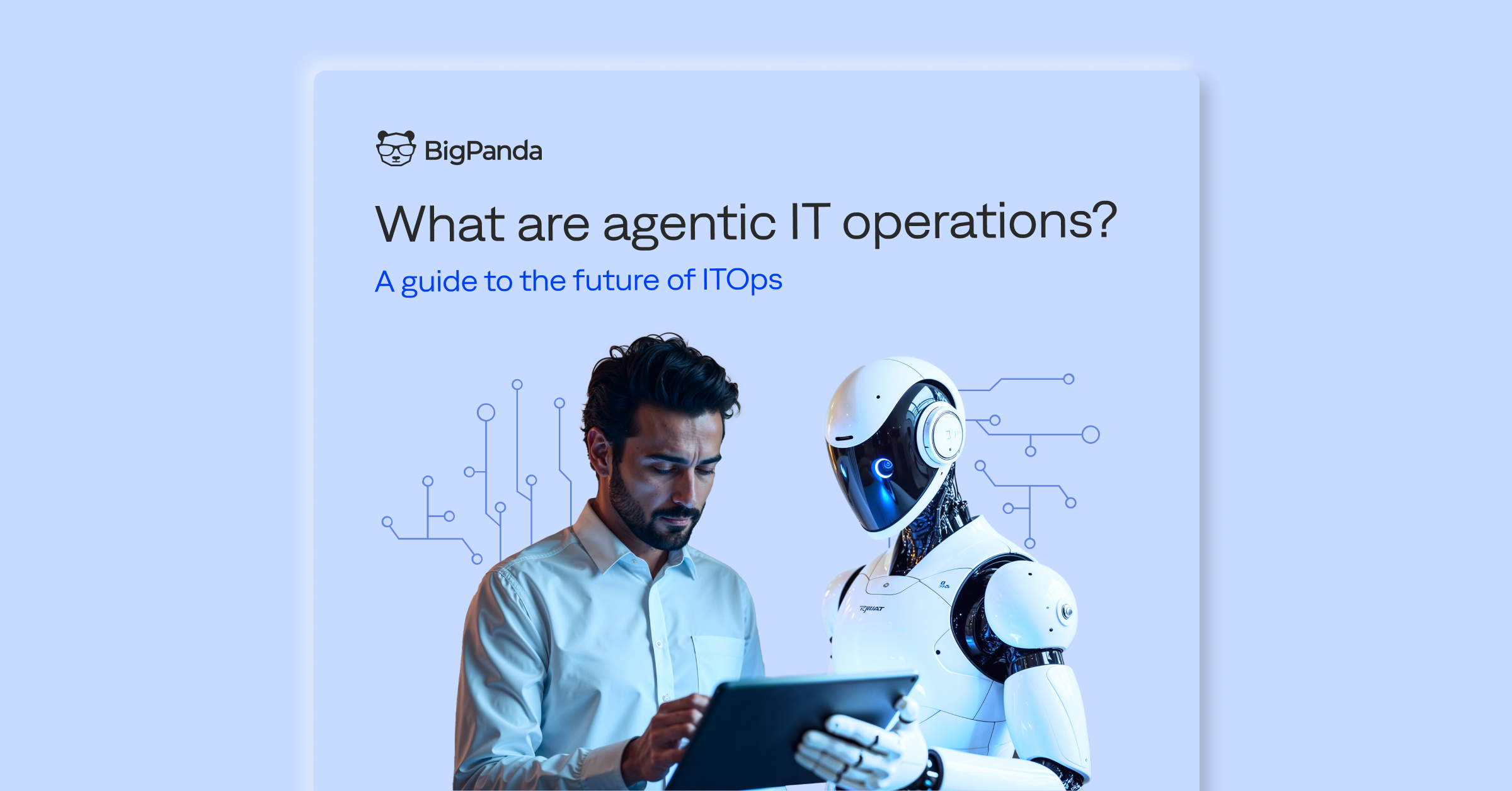The need to accelerate innovation in IT operations

First, let me give you proof that AI didn’t write this. The discerning human is learning that a significant portion of the media they consume is AI-generated or at least AI-enhanced. AI readers will likely crawl this post and distribute it to those the algorithm deems to be likely prospects for our product.
I work for an enterprise SaaS company, BigPanda, an event intelligence and AIOps platform for large enterprises across all industries. Our typical customer has achieved a scale and market dominance that allows for some inefficiency in how they operate. At this point in their lifecycle, stability is a priority. New technology is destabilizing, so the internal immune response is strong. It is strongest among those departments that are least capable of adapting.
This is where BigPanda has chosen to compete. We help organizations use technology — including machine learning and AI — to accelerate innovation in their IT operations. Hopefully, you have now realized I’m very much a human, and AI did not write this.
Why innovation is essential in IT operations
It’s interesting how we got to this point. BigPanda is part of a startup industry that exists to test, perfect, package, and serve new technology to large organizations. Venture capital companies invest billions into startups that develop new technology to fit into the enterprise ecosystem of processes and departments.
Startups are innovative, but the goal isn’t to radically transform established industries to make them orders of magnitude more efficient or effective. These startups innovate at the edges to make incremental efficiency and efficacy improvements without being too disruptive. As a startup, success in the large enterprise market requires a magic combination where it becomes undeniable that you’ve developed a significantly better way to achieve a specific business outcome.
Outside of those, progress is grinding and slow. New technology developments like generative AI have been adopted cautiously for fear of causing too much disruption. There are many reasons to adopt new tech slowly. But fundamentally, it boils down to risk management. Most large enterprises have been so dominant in their industries that their motivation (and ability) to change and adapt quickly is degraded.
They know this. Out of a justified sense of caution, they resist adopting new technologies (like an insurance company refuses any initial claim). But then, suddenly, someone in the company musters the courage to try a new SaaS product. When this experiment makes things run slightly or even massively better in one part of the business, other teams and companies see it. Once experimental tech is deemed “safe,” a herd effect occurs over the next 3 to 10 years. Slowly, and then all at once, the disruption is allowed.
The AI revolution is forcing IT to accelerate innovation
Now and then, a new technology comes along with a significant potential impact that requires serious evaluation. This tests stability-seeking enterprises in ways that most haven’t been since their early days. They must adapt because the new technology changes the game and allows new competition.
The test is to see if the company can remember how to adapt. It forces organizations to question whether their employees and executives can return to “understand and apply” mode, innovate, and improve the business. Some succeed and continue to prosper. Others fail, often resulting in a leadership change.
Like the asteroid that wiped out the dinosaurs, technology revolutions eliminate the organizations that were too entrenched in the old environment. This creates space and opportunity for those that can quickly adapt and accelerate innovation.
This type of disruption occurred with the introduction of the internet, mobile devices, and cloud computing. Now, it’s starting to happen with AI. This only occurs in industries that are still functioning in a free market. If an industry is a monopoly or an oligopoly, has successfully engaged in regulatory capture, or has enough political influence, it can remain stable despite new technological innovations.
How BigPanda helps accelerate innovation in IT operations
BigPanda serves a specific market: IT operations and IT event management. Regardless of industry, most organizations run these processes inefficiently. Tens, hundreds, and sometimes thousands of people spend vast time, effort, and money maintaining service uptime. ITOps responders are left chasing observability events that aren’t actionable and don’t represent real problems simply because they lack the context to know not to.
This creates fragmented awareness of how services operate. No one team can consolidate the knowledge and understanding to run services effectively or efficiently. The problem is a function of scale and time: Smaller, younger companies aren’t experiencing it, only the more prominent, middle-aged companies.
Over the years, a series of “safe” technology and process decisions have resulted in terrible outcomes for IT operations. They perpetuate because the competitive pressure is near zero. BigPanda fixes these problems by giving these IT teams the context they need and helping them find and fix the real issues with their company’s services.
Adopting new technology and processes is an essential step for teams that haven’t innovated in a while. They gain a sense of progress in a frustratingly stagnant environment, which helps them adapt to more significant changes as GenAI matures and disrupts all IT operations. My advice: Give your teams a fighting chance and a warm-up round before the AI revolution begins.
Next steps
BigPanda uses advanced GenAI to help reduce IT noise and identify incident root causes quickly. Learn more about how AIOps can improve operational efficiency and enhance incident management.
- Watch our on-demand webinar, “AIOps 101: Use GenAI to deliver context and remediate faster,” to learn how AIOps benefits IT operations.
- Learn more about improving mean time to resolution (MTTR) with AI.




